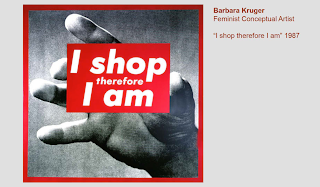Keys: Key rings/ Key chains
Definition: "a metal ring on to which keys may be threaded in order to keep them together." (function)
Key rings/chains can be used for a number of reasons:
Souvenir, advertising to promote a business (name & logo)- cheap and easy way of
marketing, personal identity (unique), collectable items (characters/ nostalgia)
key chains put into cereal boxes to promote films, personal- family photos
car key chains/ fobs, offer other functions (useful).
Other uses:
Key rings/chains can be used for a number of reasons:
Souvenir, advertising to promote a business (name & logo)- cheap and easy way of
marketing, personal identity (unique), collectable items (characters/ nostalgia)
key chains put into cereal boxes to promote films, personal- family photos
car key chains/ fobs, offer other functions (useful).
Other uses:
Ebay's Ultimate Keyring Buying Guide:
"Keyrings are one of those items that everyone has and there are literally thousands of variations that exist. They come in all shapes and sizes, and often serve a purpose that is above and beyond simply something to attach keys to."
"Choosing the Right Keyrings
Keyrings, or key chains, are an extremely important part of life and at the same time one that many people take for granted as something that will just be there.
A keyring holds some of the most valuable assets that you have in life and choosing the right one is a process that not many go through.
Many keyrings are simple in their nature and just do the job of holding a set of keys and nothing else. Other ones are far more complex and there are some that can do all manner of different tasks.
With so many on the market these days there is quite literally one for everyone and the next section looks at the different keyring types available and who they are most appropriate for.
Secure Keyrings
The main function of a keyring is to make sure the keys attached to them are safe.
Caretakers, security personnel and anyone that has to look after large numbers of keys for their profession will need to have one that can take a lot of wear and tear.
Various secure keyrings are introduced in the table below along with a description:"
This means that these types if keyring have a duty and a purpose rather than just their aesthetics.
"Practical Keyrings
Keyrings can now be obtained to perform a large number of daily tasks and as such a set of keys is now more akin to a swiss army knife than anything else. The table below outlines some of the more popular keyrings available with a short description alongside."
From the larger list further above in this blog post which states different types of practical uses of key rings, this list is much more concise on Ebay (possibly the most used/ bought). For instance the type of person who owns a bottle opener keyring could be completely different to someone who owns a compass keyring (possibly outdoors orientated).
From my initial ideas of key rings being personal, this further extends on the idea that photographs can be used.
"How secure do the keys need to be that are on the end of the keyring?
Is any level of personalization required?"
From looking at this ebay page I have found that there categories for types of key rings:
Secure keyrings (robust/lasting)
Practical keyrings (other uses)
Personalised (photographs)
Collectable keyrings (of worth)
Luxury keyrings (fashion/wealth)
Commercial keyrings (promotion)
To further research I will look into how these can relate to the type of people using/ buying them and what key rings friends/family have.























































